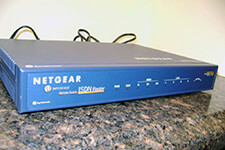ISDN
Stands for "Integrated Services Digital Network." ISDN is a telecommunications technology that enables the transmission of digital data over standard phone lines. It can be used for voice calls as well as data transfers.
The first ISDN standard was defined in 1988 by the CCITT organization, which is now the ITU-T (International Telegraph and Telephone Consultative Committee). However, it wasn't until the 1990s that the service became widely used. Since the introduction of ISDN, several variants have been standardized, including the following:
- Basic Rate Interface (BRI) - supports two 64 kbps bearer channels (or B channels) for a data transfer rate of 128 kbps.
- Primary Rate Interface (PRI) - supports 30 B channels and two additional channels in a single E1 connection, providing a data transfer rate of 2,048 kbps.
- Always on Dynamic ISDN (AODI) - an consistent ISDN connection that uses the X.25 protocol and supports speeds up to 2 Mbps.
ISDN was a common high-end Internet service in the 1990s and early 2000s and was offered by many ISPs as faster alternative to dial-up Internet access. Many businesses and organizations used ISDN service for both Internet access and network connections between locations. In the mid-2000s, DSL and cable serviced began to replace ISDN connections because of their faster speed and lower cost. Today, ISDN is still used in some network connections, but it is rarely used for Internet access.
 Test Your Knowledge
Test Your Knowledge